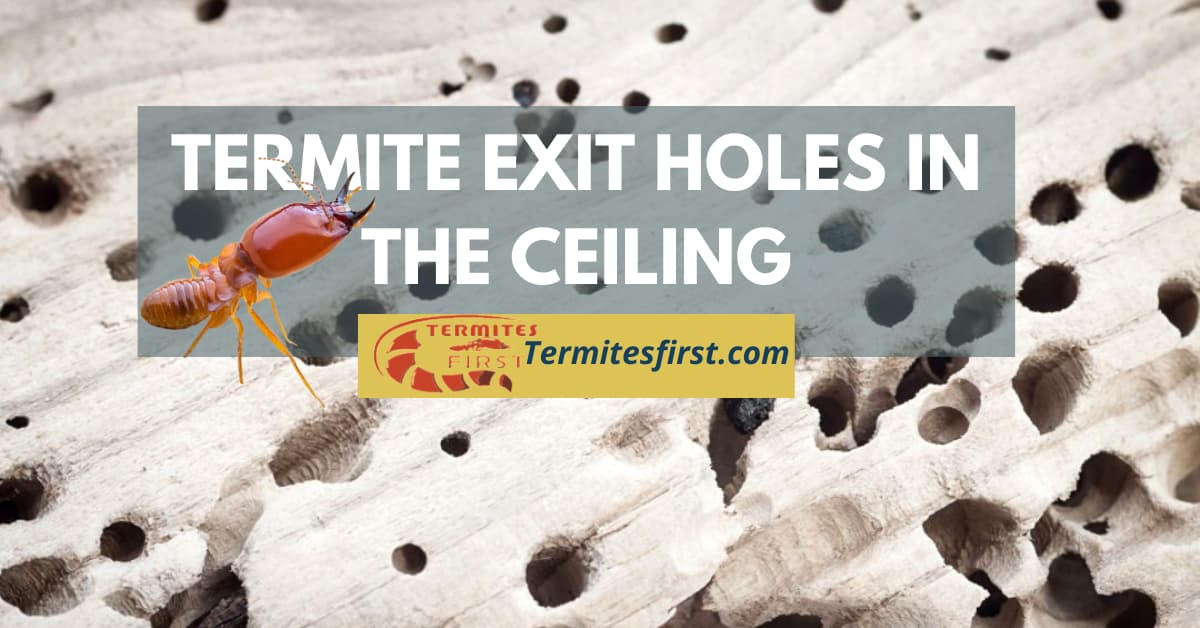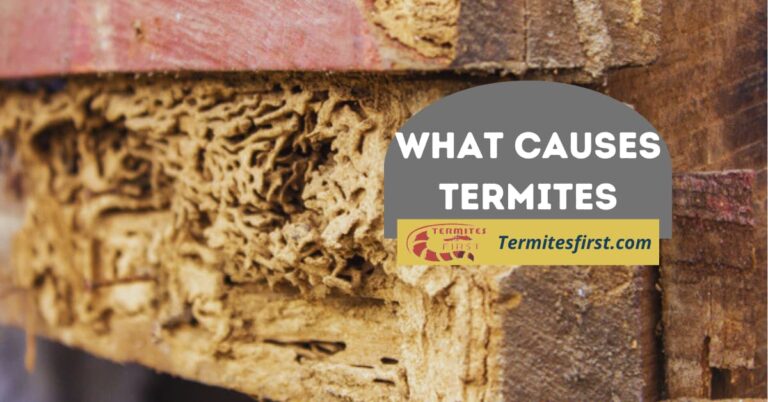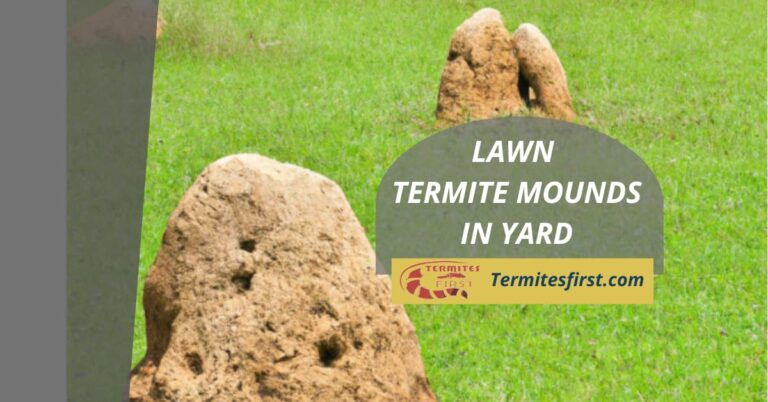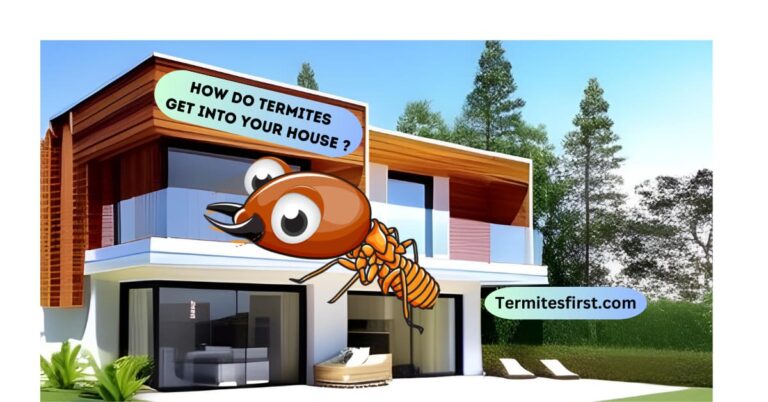Termite Exit Holes in the Ceiling: My Unexpected Discovery
Did you know that termites and beetles cause over $5 billion in property damage each year due to structure infestation in buildings, often leaving a hole? I’ve seen firsthand how these tiny pests, like termite swarmers and beetles, can wreak havoc with termite swarms and cause termite damage. One of the most alarming signs of an infestation is the presence of termite exit holes in the ceiling, which can indicate drywood termites swarm or subterranean termites, often found in like substance materials termites. These small holes indicate that termites are actively damaging your home.
Ignoring them can lead to serious structural issues, such as termite damage from subterranean termites and costly repairs, often indicated by a tale termite infestation sign from nearby termite colonies. I want to help you identify these signs, such as a termite hole or a termite exit hole, and understand what steps to take next regarding subterranean termite issues. In this post, I’ll share tips on spotting termite exit holes and how to deal with them effectively. Protecting my home from termites, especially the hole they create, is essential, and I’m here to guide you through it.
Key Takeaways
- Termite exit holes in the ceiling are a clear sign of an infestation; inspect your ceilings regularly for these signs to catch problems early.
- Familiarize yourself with the visual signs of termite holes and droppings, as identifying these can help you act quickly before damage worsens.
- Look for early indicators of ceiling termites, such as sagging ceilings, unusual sounds, or holes, to prevent extensive damage to your home.
- Understand the appearance of termite frass, which resembles sawdust and may indicate a hole, as this can help you differentiate between types of pests in your home.
- Be aware of the dangers associated with termite droppings, as they can indicate a larger infestation, a hole, and potential structural damage.
- Connect the presence of frass with exit holes; if you find both, it’s crucial to consult a pest control expert immediately.
What Are Termite Exit Holes
Definition
Termite exit holes are small, round openings found in wood or drywall. These holes are created by termites as they leave their tunnels. I have seen these holes in my own home, and they can be alarming. They often signal a termite infestation that needs immediate attention, especially if there is a hole.
Purpose
The main purpose of these exit holes is related to the mating process of termites. After mating, reproductive termites leave their original colony to find a new hole for establishing a nest. They create these termite holes to exit the wood or drywall where they have been living.
This behavior is vital for the survival of the species, especially near a termite hole. It allows them to spread and form new colonies. Understanding this helps in recognizing the hole of urgency in addressing an infestation quickly.
Size
These exit holes are typically one-eighth inch or smaller in diameter. Their small size makes them easy to overlook at first glance, like a hole. However, once you know what hole to look for, they become more noticeable.
I remember inspecting my ceiling and finding several tiny holes that were hard to spot without close examination. The distinctiveness of these holes can help homeowners identify potential termite problems early on.
Identify Termite Exit Holes

Distinguishing Features
Termite exit holes differ from those made by other insects. The material used to cover these holes is crucial for identification. Termites often use a brown plaster-like substance. This substance can appear as a mix of wood particles and saliva.
Other insects, like carpenter ants, create holes without this covering. Their exit points usually remain open and may have no protective layer. I noticed this difference when inspecting my home. It helped me determine the type of insect I was dealing with.
Size Matters
The size of the termite exit hole is important for identification. Typically, these holes measure about 1/8 inch in diameter. Larger holes might indicate a more severe infestation. Smaller holes could suggest recent activity or new termite colonies forming.
I often recommend measuring the holes during inspections. This simple step provides valuable information regarding the extent of the problem.
Observing Surroundings
Looking around the area is essential for confirming termite activity. Signs include mud tubes and droppings near the exit holes. Mud tubes are protective tunnels that termites build to travel between their colonies and food sources. They usually appear on walls or ceilings.
Droppings, also known as frass, resemble small wood pellets. Finding these near termite entry points suggests an active infestation. I once found frass on my windowsill, which led me to investigate further.
Additional Signs
Keep an eye out for other indicators of termite presence. Swarmers are a clear sign of a nearby colony. These winged termites leave their nests in search of new locations to establish colonies. Seeing swarmers indoors typically means there’s an infestation nearby.
Another sign is damaged wood surfaces. Termites consume wood from the inside out, leaving thin outer layers intact. Tapping on wooden structures can help identify hollow sounds that indicate damage.
Expert Assistance
If you suspect termites, contacting a termite professional is wise. They can provide a thorough inspection and recommend effective control methods. Professionals use specialized tools to detect hidden infestations that might go unnoticed.
Visual Signs of Termite Holes
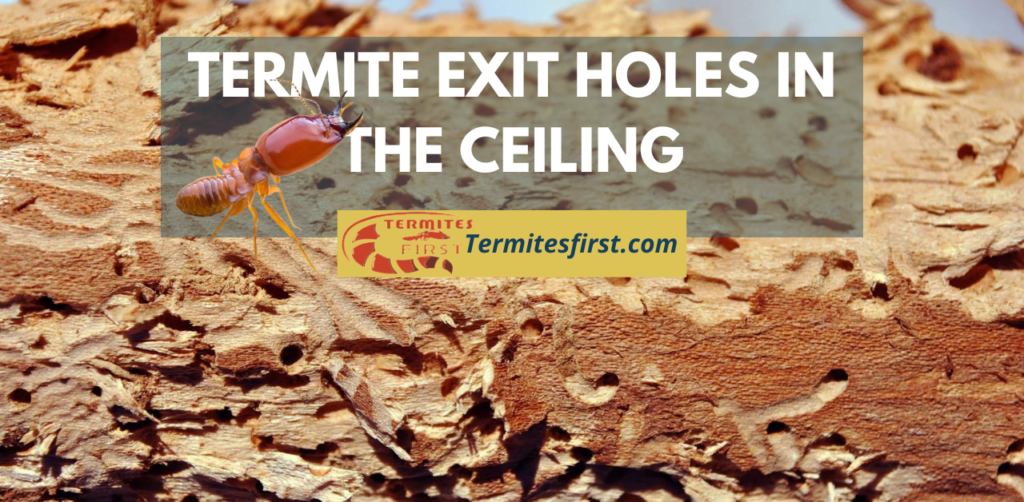
Hole Characteristics
Termite exit holes are small and round. They typically measure about 1/16 to 1/8 inch in diameter. These holes can often be found in wood structures, such as beams and ceilings. The presence of these holes is a tale termite infestation sign. I remember the first time I noticed them in my home. It was alarming to see those tiny openings.
Active termite infestations create these holes as termites push out waste. This waste includes frass, which resembles sawdust. The holes may also appear slightly uneven or ragged around the edges. A close inspection reveals these details clearly.
Soil and Debris
Look for soil particles or debris around the holes. This accumulation suggests recent termite activity. Termites often leave behind small mounds of dirt as they tunnel through wood. I have seen this firsthand when checking my attic for signs of damage.
The presence of these materials indicates that termites are actively feeding on the wood. If you find a significant amount of debris, it could signal a serious termite problem. It’s crucial to take action quickly if you notice this in your home.
Patterns and Clusters
Observe the area for patterns or clusters of exit holes. Termites usually work together in colonies, creating multiple holes in one location. A few scattered holes may not indicate a major issue, but clusters suggest an active termite infestation.
I once saw a series of exit holes in an old wooden beam in my garage. The pattern was concerning and prompted me to call an exterminator right away. They explained that a larger colony might be present if I noticed several holes close together.
Importance of Early Detection
Detecting these visual signs early can save you money and stress later on. Ignoring them might lead to extensive termite damage, which can weaken the structure of your home. Timely intervention is key to preventing further destruction by hungry termites.
Regular inspections help catch these signs before they become severe issues. I now make it a habit to check my ceilings and wooden structures regularly. This proactive approach has given me peace of mind regarding potential infestations.
Early Indicators of Ceiling Termites
Common Signs
I often look for early signs of termites in ceilings. Sagging areas can indicate a serious problem. Discolored patches may also show moisture damage caused by termite activity. These signs suggest that wood has been compromised.
Small holes or cracks can appear in the ceiling. I recommend checking these closely. They may be exit holes where termites have left the wood. Finding these holes early can prevent more extensive damage.
Sounds to Monitor
Unusual sounds can signal termite presence. Tapping or clicking noises often come from inside the walls or ceiling. I have noticed that these sounds increase during warmer months. It seems that as temperatures rise, termite activity also ramps up.
Mating season typically occurs in late spring to early summer. This is when you might hear more sounds. It’s essential to pay attention during this time.
Importance of Inspection
Regular termite inspections are crucial for homeowners. I advise scheduling an inspection at least once a year. Trained professionals can spot signs that may go unnoticed. They check for structural damage and potential entry points.
Carpenter bees can sometimes be confused with termites. They create similar exit holes but do not cause the same level of damage. Knowing the difference helps in identifying the right pest.
Temperature Effects
Temperature plays a significant role in termite behavior. Warmer conditions often lead to increased activity. During colder months, termites usually slow down but don’t disappear completely. They remain hidden, waiting for the right time to come out again.
Understanding how temperature affects termites helps in planning inspections and treatments. This knowledge can save homeowners from costly repairs later on.
Personal Experience
In my experience, catching these signs early makes a big difference. A friend ignored small holes in their ceiling until it was too late. The damage cost thousands to repair, and they wished they had acted sooner.
Being proactive about monitoring your home can prevent such issues. Regular checks and awareness of signs are key to protecting your property.
Understanding Termite Droppings
Definition and Composition
Termite droppings, often called frass, are the waste produced by termites. They consist mainly of wood particles that termites digest. The droppings have a fine texture and usually appear as small pellets. These pellets can be light brown or black in color.
I once found some frass in my attic. It looked like tiny grains of sand scattered around. This made me realize how important it is to recognize these signs.
Indicator of Presence
Finding termite droppings is a clear indicator of termite activity in your home. If you see frass, it’s a sign that termites are nearby and possibly causing damage. Droppings often accumulate near exit holes or areas where termites are feeding.
In my experience, I learned that early detection can save homeowners from expensive repairs. The sooner you act, the better chance you have of controlling the infestation.
Differentiating Droppings
It’s crucial to differentiate termite droppings from those of other pests. Other insects, like carpenter ants or rodents, also leave droppings but they look different. Termite frass is more pellet-shaped and has a smoother surface compared to other pest droppings.
I remember checking for signs in my basement. I found some droppings and was unsure if they were from termites or another pest. After researching, I learned how to identify them accurately.
Importance of Identification
Correctly identifying termite droppings helps in taking the right action. Misidentifying them can lead to ineffective treatments and wasted time. Homeowners should consult pest control experts if they are unsure about what they find.
Using magnification tools can help in examining the droppings closely. Observing their size and shape can make a difference in identification.
Appearance of Termite Frass
Physical Characteristics
Termite frass looks like a fine powdery substance. It often has a light brown or tan color. The texture is similar to sawdust, making it easy to mistake for wood shavings. I remember seeing this material in my friend’s attic. It was scattered around the beams and had a dry appearance.
The size of the frass particles varies. Some are very small, while others can be slightly larger. This variation happens because different species of termites produce different types of frass. The presence of this powdery substance indicates an active termite infestation.
Accumulation Near Exit Holes
Frass tends to accumulate near exit holes or areas where termites are active. These tiny holes are often found in wooden structures, ceilings, or walls. When termites eat through wood, they push out their droppings. As a result, you may find clumps of frass on the floor or near the holes.
Finding fresh termite frass is crucial. Fresh frass appears darker and more moist than older droppings. I have noticed that if the frass is left undisturbed for a while, it becomes lighter and drier. This change in appearance can help identify how long the infestation has been present.
Collecting Samples
Collecting samples of termite frass is important for identification. A simple method involves using a piece of tape or a small container to gather the substance. Once collected, you can examine it closely for signs of termites.
Confirming the presence of termites requires careful observation. If you see wood particles mixed with the frass, it’s likely from a termite infestation. I suggest taking your sample to a pest control expert for analysis. They can provide guidance on what steps to take next.
Understanding termite feces helps homeowners act quickly. Early detection can prevent significant damage to your home. If you notice any signs of frass, don’t hesitate to investigate further.
Dangers of Termite Droppings
Structural Damage
Termite droppings, also known as frass, can signal a potential termite problem. When many termites infest a structure, they consume wood and leave behind droppings. Over time, significant amounts of frass can lead to structural damage.
I have seen firsthand how quickly a small infestation can escalate. A friend of mine ignored the signs and ended up with severe damage to their ceiling. They had to spend a lot on repairs. Timely intervention could have saved them money and hassle.
Drywood termites are particularly problematic. They create nests in wood and produce large amounts of droppings. If left unchecked, these infestations can compromise the integrity of beams and supports in a home.
Health Risks
Inhaling or coming into contact with termite droppings poses health risks. Frass can contain allergens that affect people with respiratory issues. Symptoms may include coughing, sneezing, or even asthma attacks in sensitive individuals.
I remember reading about cases where families faced health challenges due to prolonged exposure to these droppings. It’s crucial to keep your living space clean and free from potential allergens.
Moreover, many termites swarm during specific seasons. This swarming behavior increases the likelihood of droppings being present in your home. If you notice any signs of termite activity, it’s essential to act quickly.
Prompt Action Needed
Addressing termite infestations promptly is vital to prevent further damage. Ignoring the issue may lead to costly repairs down the line. The longer termites remain unchecked, the more extensive the damage becomes.
Homeowners should regularly inspect their properties for signs of infestation. Look for droppings, exit holes in ceilings, or even wings left behind by swarming drywood termites.
If you suspect an infestation, consider contacting pest control experts immediately. They can assess the situation and recommend appropriate treatment options.
Taking action early helps protect your home and health. I’ve learned that prevention is always better than dealing with the aftermath of an infestation.
Droppings and Exit Holes Connection
Frass Accumulation
Frass is a term for termite droppings. It often looks like small wood pellets or sawdust. Homeowners may find frass near exit holes in drywall or plaster. This accumulation can signal that termites are active in the area. I remember when I first spotted frass in my home; it was alarming to think about what might be causing it.
Termites produce frass as they consume wood and other materials. The presence of these droppings indicates that termites are nearby, making their home within the structure. Observing frass should prompt immediate investigation.
Active Termite Indicators
Finding both frass and exit holes is a strong indicator of an active termite colony. Exit holes are small openings where termites leave their nests. They create these holes to escape and search for food. When I noticed exit holes in my ceiling, I quickly connected them to the frass I had seen earlier.
Active colonies can cause significant damage over time. If left unchecked, termites can weaken the structural integrity of a building. Homeowners need to recognize these signs early.
Immediate Action Required
If you see frass and exit holes, take action right away. Ignoring these signs can lead to costly repairs and extensive damage. It’s crucial to address the problem before it escalates.
Consider contacting a pest control professional for an inspection. They can assess the situation and recommend effective treatment options. I learned this the hard way after delaying action in my own home.
Here are some steps homeowners should take:
- Inspect areas where you notice frass or exit holes.
- Check for additional signs of termite activity, such as mud tubes.
- Contact a pest control expert for help.
- Follow their recommendations to treat your home.
Conclusion:-
I’ve covered the essentials about termite exit holes in ceilings. Understanding what these holes are and recognizing the signs early can save you a lot of trouble. I’ve shared insights on identifying frass, droppings, and their connection to exit holes. These details matter because ignoring them can lead to severe damage.
If you notice any signs of termites, don’t wait. Take action now to protect your home. Consult a pest control expert to assess the situation and provide solutions. Remember, catching these pesky critters early can save you time and money in repairs. Stay vigilant and keep your home safe from termites!
FAQ’s:-
Termite exit holes are small openings created by termites when they leave their nests. These holes can appear in ceilings, walls, or wood surfaces, indicating an active infestation.
Look for tiny holes about the size of a pencil lead. They may be surrounded by frass or droppings. A close inspection of wood surfaces and ceilings is crucial for identification.
Visual signs include small round holes, frass accumulation, and bubbling or peeling paint. If you notice these signs, it’s essential to investigate further.
Early indicators include soft or sagging ceilings, unexplained cracks, and the presence of exit holes. Timely detection helps prevent severe damage.
Termite droppings, known as frass, look like small pellets. They are often found near exit holes and indicate an active infestation.
Termite frass resembles tiny wood-colored pellets or sawdust. It often accumulates beneath infested areas, such as ceilings or wooden structures.
Termite droppings can signal an ongoing infestation that may compromise structural integrity. Ignoring them can lead to costly repairs and increased damage over time.

